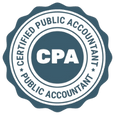
Lifetime Learning Credit (LLC): What it Is, How It Works
The Lifetime Learning Credit (LLC) is a federal tax credit that helps you reduce the cost of education by up to $2,000 per year. It applies to college, graduate programs, professional courses, job-skill training, and even a single class taken to improve your career.
In this guide we’ll explain how it works, who qualifies, and how to claim it properly.
What Is the Lifetime Learning Credit?
The Lifetime Learning Credit lets you claim 20% of the first $10,000 you spend on qualified education expenses. That means you can receive up to $2,000 per tax return each year.
It is one of the most flexible education credits because:
-
You can claim it every year there’s no limit.
-
It applies to any level of education.
-
Courses do not need to lead to a degree.
-
You can claim it for yourself, your spouse, or your dependent.
Read more about foreign earned income exclusion
Who Can Claim the Lifetime Learning Credit?
1. Income Limits
Your modified adjusted gross income (MAGI) must be:
-
$80,000–$90,000 (single filers)
-
$160,000–$180,000 (married filing jointly)
Once you cross the upper limit, you cannot claim the credit.
2. Filing Status Rules
You can claim the LLC if you file:
-
Single
-
Head of household
-
Married filing jointly
You cannot claim it if you file “married filing separately.”
3. Eligible Schools
The school must be accredited and eligible for federal student aid.
This includes:
-
Colleges and universities
-
Community colleges
-
Trade and technical schools
-
Eligible online programs
4. Qualified Students
The student can be:
-
You
-
Your spouse
-
Your dependent
There is no minimum number of courses required even one class counts.
How Much Can You Save?
Example 1: Lower Education Expense
If you paid $5,000 in tuition and required fees:
20% × $5,000 = $1,000 credit
Example 2: Higher Education Expense
If you paid $12,000. You still receive the maximum $2,000 credit. (It cannot exceed that amount.)
Is the Lifetime Learning Credit Refundable?
No the LLC is non-refundable.
This means:
-
It can reduce your tax bill to zero
-
It cannot generate a refund
-
Any remaining credit is not carried forward
What Expenses Count for the Lifetime Learning Credit?
Qualified Expenses (Allowed)
-
Tuition
-
Mandatory enrollment fees
-
Required course materials paid directly to the institution
Not Allowed (Most People Get This Wrong)
-
Room and board
-
Transportation
-
Optional textbooks
-
Meals and personal expenses
-
Payments for sports or hobbies unless part of the academic program
How to Claim the Lifetime Learning Credit
Step 1: Collect Form 1098-T
Your school sends this form showing the amount you paid.
Step 2: Gather Proof of Payments
Keep receipts for required materials and institutional fees.
Step 3: Complete IRS Form 8863
This is where you calculate your credit.
Step 4: Attach the Form to Your 1040
File electronically for fewer errors.
Lifetime Learning Credit vs. American Opportunity Tax Credit
|
Feature |
Lifetime Learning Credit (LLC) |
American Opportunity Tax Credit (AOTC) |
|
Max Credit |
$2,000 per tax return |
$2,500 per student |
|
Refundable? |
No |
Partially (up to $1,000) |
|
Years Allowed |
Unlimited |
First 4 years of college only |
|
Student Type |
Any student |
Undergraduate only |
|
Courses Covered |
Degree & non-degree |
Degree only |
Why the Lifetime Learning Credit Matters
The LLC is valuable because it supports:
-
Skill-building courses
-
Career-change education
-
Graduate school
-
Professional certifications
-
Continuing education requirements
It’s one of the few credits that adults can use long after finishing college.
Tips to Maximize the Lifetime Learning Credit
-
Pay tuition within the same tax year to maximize eligibility
-
Keep your MAGI below the phase-out limit
-
Use retirement contributions to lower income if needed
-
Keep receipts and records (in case of IRS review)
-
Consider working with a tax professional if your situation is complex
Common Mistakes People Make
-
Claiming optional supplies as qualified expenses
-
Forgetting to include Form 1098-T
-
Incorrectly claiming the credit for a school that isn’t accredited
-
Filing “married filing separately” and expecting eligibility
-
Mixing LLC and AOTC incorrectly (you can’t claim both for the same student in same year)
How SK Financial CPA Can Help
SK Financial CPA has 24+ years of experience helping individuals and families claim education credits, reduce tax liability, and plan smarter for future expenses. If you want a stress-free filing experience and want to make sure you’re not leaving money on the table, our team can help you claim the Lifetime Learning Credit correctly.
Conclusion
The Lifetime Learning Credit is one of the most flexible education benefits available. Whether you're gaining new skills, returning to school, or helping your dependents with tuition, this credit can significantly reduce your tax bill.
Understanding the rules income limits, qualified expenses, and proper filing steps ensures you claim the credit without mistakes and maximize your savings.
FAQs
Can I claim the LLC for online courses?
Yes, as long as the institution is accredited.
Can I claim the credit if I already have a degree?
Yes, there is no limit on years or degree level.
Can I claim it for more than one student?
Yes, but the maximum credit remains $2,000 per tax return.
Can I claim both LLC and AOTC?
Not for the same student in the same year. But you may use them for different dependents if eligible.
Follow SKFinancial on Facebook / Twitter / Linkedin / Youtube for updates.












